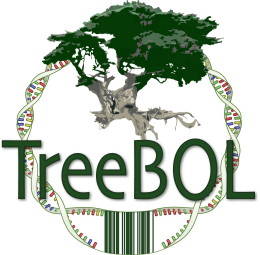GENERALES
- Barcoding Life: Ten Reasons (CBOL)
- Barcode of Life Initiative (CBOL)
- DNA Barcoding: A New Tool for Identifying Biological Specimens and Managing Species Diversity (CBOL)
- Bracoding Protocols (CBOL)
- Que Bicho es?
PLANTAS
- Chase MW, Salamin N, Wilkinson M, Dunwell JM, Kesanakurth RP, Haidar N, Savolainen V. 2005. Land plants and DNA barcodes: short-term and long-term goals. Phil. Trans. R. Soc. B. 360: 1889–1895. (pdf)
- Chase MW, Cowan RS, Hollingsworth PM, van den Berg C, Madriñán S, Petersen G, Seberg O, Jørgsensen T, Cameron KM, Carine M, Pedersen N, Hedderson TAJ, Conrad F, Salazar GA, Richardson JE, Hollingsworth ML, Barraclough TG, Kelly L, Wilkinson M. 2007. A proposal for a standardised protocol to barcode all land plants. Taxon 56(2): 295–299. (pdf)
- Cowan R, Chase MW, Kress WJ, Savolainen V. 2006. 300,000 species to identify: problems, progress, and prospects in DNA barcoding of land plants.Taxon. 55(3): 611-616. (pdf)
- Dugan L, Wojciechowski M, Landrum L. 2007. A large scale plant survey: efficient vouchering with identification through morphology and DNA analysis. Taxon 56: 1238–1244. (pdf)
- Fazekas AJ, Burgess KS, Kesanakurti PR, Graham SW, Newmaster SG, Husband BC, Percy DM, Hajibabaei M, Barrett SC. 2008. Multiple multilocus DNA barcodes from the plastid genome discriminate plant species equally well. PLoS ONE 3(7): e2802. (pdf)
- Hajibabaei M, Smith MA, Janzen D. Rodríguez JJ, Whitfield JB, Hebert PD. 2006. A minimalist barcode can identify a specimen whose DNA is degraded. Molecular Ecology Notes 6: 959–964. (pdf)
- Hajibabaei M, Singer AC, Hebert PD, Hickey DA. 2007. DNA barcoding: how it complements taxonomy, molecular phylogenetics and population genetics. TRENDS in Genetics Vol.23 No.4. 167-172 (pdf)
- Hebert PD, Gregory TR. 2005. The Promise of DNA Barcoding for Taxonomy. Syst. Biol 54(5):852-859. (pdf)
- Hollingsworth PM. 2008. DNA barcoding plants in biodiversity hot spots: progress and outstanding questions. Heredity 101, 1–2. (pdf)
- Ivanova NV, Fazekas AJ, Hebert PD. 2008. Semi-automated, Membrane-Based Protocol for DNA Isolation from Plants. Plant Mol. Biol. Rep. 26(3): 186-198. (pdf)
- Kress WJ, Wurdack KJ, Zimmer EA, Weigt LA, Janzen DH. 2005. Use of DNA barcodes to identify flowering plants. PNAS 102(23): 8369–8374. (pdf)
- Kress WJ, Erickson DL. 2007. A Two-Locus Global DNA Barcode for Land Plants: The Coding rbcL Gene Complements the Non-Coding trnHpsbA Spacer Region. PLOS One 6(e508) 1-10. (pdf)
- Kress WJ, Erickson DL. 2008. DNA barcodes: Genes, genomics, and bioinformatics. PNAS 105 (8): 2761–2762. (pdf)
- Kress WJ, Erickson DL. 2008. DNA Barcoding-a Windfall for Tropical Biology? BIOTROPICA 40(4): 405–408. (pdf)
- Lahaye R, Savolainen V, Duthoit S, Maurin O, van der Bank M. 2008. A test of psbK-psbI and atpF-atpH as potential plant DNA barcodes using the flora of the Kruger National Park (South Africa) as a model system. Available from Nature Precedings http://hdl.handle.net/10101/npre.2008.1896.1 (pdf)
- Lahaye R, van der Bank M, Bogarin D, Warner J, Pupulin F, Gigot G, Maurin O, Duthoit S, Barraclough TG, Savolainen V. 2008. DNA barcoding the floras of biodiversity hotspots. PNAS 105 (8): 2923–2928. (pdf)
- Ledford H (2008) Botanical identities. Nature 451: 616. (pdf)
- Little DP, Stevenson DW. 2007 A comparison of algorithms for the identification of specimens using DNA barcodes: examples from gymnosperms. Cladistics 23: 1-21. (pdf)
- Lou M, Golding GB.2007. FINGERPRINT: visual depiction of variation in multiple sequence alignments. Molecular Ecology Notes 7: 908–914. (pdf)
- Newmaster SG, Fazekas AJ, Ragupathy S. 2006. DNA barcoding in land plants: evaluation of rbcL in a multigene tiered approach. Canadian Journal of Botany 84 335–341. (pdf)
- Newmaster SG, Fazekas AJ, Steeves RAD, Janovec J. 2008. Testing candidate plant barcode regions in the Myristicaceae. Molecular Ecology Resources 8(3): 480-490. (pdf)
- Nitta JH. 2008. Exploring the utility of three plastid loci for biocoding the filmy ferns (Hymenophyllaceae) of Moorea. Taxon 57 (3): 725–736. (pdf)
- Pederson N, Russell SJ, Newton AE, Stephen WA. 2006. A novel molecular protocol for the rapid extraction of DNA from bryophytes and the utility of direct amplification of DNA from a single dwarf male. The Bryologist 109(2): 257-264. (pdf)
- Pennisi E. 2007. Wanted: a barcode for plants. Science 318: 190-191. (pdf)
- Rubinoff D, Cameron S, Kipling W. 2005. Are Plant DNA barcodes a search for the Holy Grail?. Trends in Ecology and Evolution 21(1): 1-2. (pdf)
- Sass C, Little DP, Stevenson DW, Specht CD. 2007. DNA barcoding in the cycadales: testing the potential of proposed barcoding markers for species identification of cycads. PLoS ONE 11: e 1154. (pdf)
- Savolainen V, Cowan RS, Vogler AP, Roderick GK, Lane R. 2005. Towards writing the encyclopaedia of life: an introduction to DNA barcoding. Phil. Trans. R. Soc. B 360: 1805–1811. (pdf)
- Summerbell RC, Lévesque CA, Seifert KA, Bovers M, Fell JW, Díaz MR, Boekhout T, de Hoog GS, Stalpers J, Crous PW. 2005. Microcoding: the second step in DNA barcoding. Phil. Trans. R. Soc. B 360: 1897–1903. (pdf)
- Taberlet P, Coissac E, Pompanon F, Gielly L, Miquel C, Valentini A, Vermat T, Corthier G, Brochmann C, Willerslev E. 2007. Power and limitations of the chloroplast trnL (UAA) intron for plant DNA barcoding. Nucleic Acids Research 35 (3): e14. (pdf)




